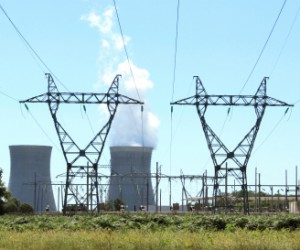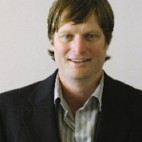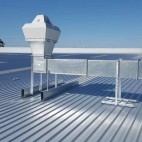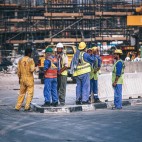Eskom's responsbility also includes maintaining current plants for efficiency and safety, to replace old technologies and to ensure environmentally responsible and sustainable energy generation.
That much is clear – but the electricity price has, on average, already increased by more than 300% in nominal terms over the past five years since 2007.
This was to be expected, according to Professor Anton Eberhard of the University of Cape Town’s Graduate School of Business. He says prices in the early 2000s held more or less steady in real terms, but by 2007 they were far below the long-run marginal cost of electricity supply. “If 1990 electricity prices had increased each year by the rate of inflation, they would have reached current levels more or less around 2010 and we would have experienced a smooth and steady price path over the past two decades,” he points out.
The intended hike in prices has met with outspoken criticism, not only at the National Energy Regulator of South Africa (Nersa) public hearings on the matter, but with public demonstrations and a vigorous debate in the mass media.
A few people would dispute the need for Eskom to be run efficiently but profitably, and at issue is among others the way in which Eskom does its calculations. Is finding the golden recipe, one that will ensure the continued health of Eskom but not harm the economy as a whole, a matter of a somewhat randomly ‘negotiated settlement’ with Nersa?
“I would not say random,” says Prof. Eberhard. “They use a standard service regulatory methodology. The problem is the numbers that are fed into the formulae. Clearly, neither Eskom nor Nersa will be able to forecast its costs very accurately.
“In the past, they have asked for revisions to the original Nersa determination on a yearly basis.”
He adds that “an associated observation is that Eskom’s cost controls and financial management have been less than optimal.”
In Eskom’s defence, Prof. Eberhard says that “there has been a great deal of misunderstanding on this issue and some have even argued that Eskom should not earn a profit. There has been the assumption that Eskom’s shareholders are taking profits out of the corporation. That is not true.
"The government is the sole shareholder and has waived its right to receive dividends. All of the so-called 'profit' stays in Eskom and is used to fund its capital expansion programme. It needs to earn a rate of return equal to its cost of capital. At a minimum, this should cover the cost of its debt.”
He adds that “the equity side of Eskom’s weighted average cost of capital is more controversial, and legitimate submissions have been made on what a fair and reasonable cost of equity should be for Eskom.” Eskom’s revenue requirement essentially consists of operating and maintenance costs, depreciation and a return on assets.
“Questions can obviously be raised whether Eskom’s costs are efficient or prudently incurred. But the main areas of contestation are around depreciation and return rates, as well as how assets are valued. At the heart of this debate is how Eskom’s capital is funded and paid for. Perhaps even more important is the efficiency of capital execution, especially in mega projects such as Medupi and Kusile,” argues Prof. Eberhard.
He is not the only critic of the way the figures are compiled. At issue is, among others, Eskom’s replacement-value accounting model and the limited information available as to planning beyond 2018.
This came under the spotlight when former Eskom director Mike Deats spoke at the Nersa hearings.
He agreed that old plant and equipment had to be replaced, but was concerned that Eskom has failed to address some important issues in its multi-year price determination report, especially in terms of what happens after 2018.
He cited the example of the lack of plans to transport coal from the Waterberg coalfield by rail rather than by truck. The issue around electricity prices is a multifaceted one.
Prof. Eberhard points out that Eskom serves just under half of electricity consumers directly, while the rest are supplied by municipalities.
“Nersa is still unable to interrogate the costs of municipal supply, or to apply economic regulation effectively. It currently uses a crude benchmarking methodology. There remain, also, serious legal and constitutional questions around Nersa’s authority in regulating municipalities.”
He adds that electricity demand now “is still below 2007 levels and the next integrated resource plan will have to take this into account. The implication is that we shall need less supply capacity.
"We need to be more flexible in our planning. This means more regular updates, and also choosing smaller, less capital-intensive technologies that can be built quickly.”
Despite the relatively steady demand, there is still the need to address the demand side for broader economic and environmental reasons.
Eskom does attend to the issue of electricity consumption, among others through its 49M awareness campaign aimed at encouraging consumers to save 10% of their electrify requirements, and also through programmes to supply free, energy-efficient technologies to homeowners such as replacing incandescent and halogen light bulbs with energy-efficient lamps, providing water-efficient showerheads free of charge and providing assistance for consumers to buy solar water heaters tested by the SA Bureau of Standards, to replace conventional geysers.
These programmes have not been fully rolled out throughout the country, however, and more needs to be done by Eskom, municipalities and industry in this regard.










